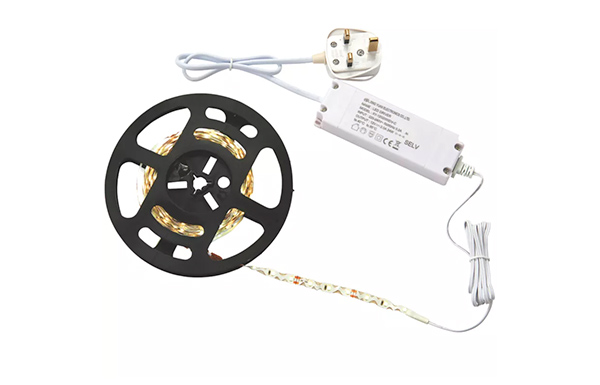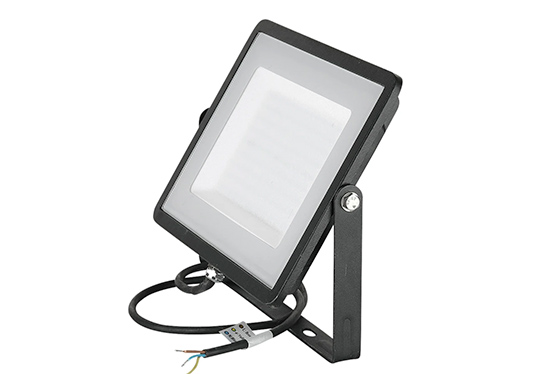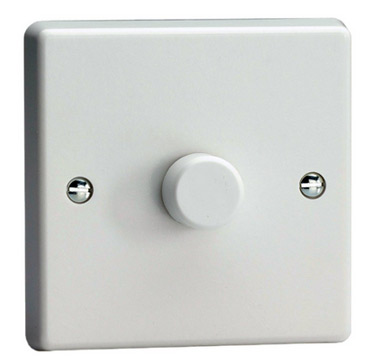LED lighting is the future, offering eco-friendly solutions that save money and energy. These bulbs last around 50,000 hours, equivalent to over 17 years with 8 hours of daily use!
Switching to LED lights can cut your lighting bill by up to 90%, saving you up to £300 annually in an average 3-bedroom home.
LED Lighting for Indoor Use
Choose from a variety of direct halogen replacement bulbs such as GU10 SMDs, MR16, E27, and MR11. Simply plug these into your existing fixtures to enjoy significant savings on your electricity bill.
While this is mostly accurate, there are a few additional details to consider.
Low Voltage Lighting
MR16 and MR11 indicate the reflector type. While GU10 bulbs can be easily replaced, low voltage lamps (usually 12V) like MR16 and MR11 often require more than just swapping bulbs.
Many low voltage lamps use switched mode power supplies, providing a controlled 12V AC called an electronic transformer. These transformers typically have an output range of 50-150W and won’t work with less than 50W, so simply replacing bulbs won’t suffice; you might also need to change the transformer.
To understand RMS (Root Mean Square) better, visit the Practical Physics website. RMS helps electrical engineers calculate the average current in an AC circuit.
Existing Bulbs and Fixtures
Standard incandescent bulbs in ceiling lights and lamps can be easily replaced with efficient LEDs. For example, a 60W incandescent bulb can be swapped for a 6W LED.
These LED bulbs have the same screw-in or bayonet cap fittings and work with existing dimmer switches (more on this below). Enjoy the benefits of LED lighting, saving both energy and money.

GU10 LED Bulb

E27 LED Screw Type Bulb
LED Strip Lighting
LED strip lights are easy to install and perfect for enhancing kitchens, bathrooms, lounges, halls, cupboards, and even garden sheds.
They come in various types, including waterproof, non-waterproof, pipe strips, and waterproof gel strips, available in 2.5 or 5-metre rolls.
For each metre of LED strip, you’ll need a 15-watt transformer. A 5-metre strip requires an 80-watt transformer.

LED strip light on a roll
Two-Way Lighting and LED Bulbs
When switching to LEDs, two-way lighting can pose a challenge. Capacitive and inductive linking may cause LEDs to stay dimly lit.
This happens because an electric field forms around the element, resisting the voltage change from the dimmer switch, preventing it from working properly.
LED Lighting for Outside Use
LED flood lights are perfect for outdoor areas, especially as security lighting when paired with a PIR sensor.
They are available in various sizes and power outputs, ranging from 900 to 7500 lumens, depending on your lighting needs (more on lumens below).

LED flood light
Choosing an LED Lighting Colour – Warm White or Cool White?
Choosing the right LED bulb colour is crucial for achieving the desired indoor lighting effect. The two main options are warm white and cool white, each creating a different ambiance in your room.
For living areas, most people prefer warm white as it emits a soft, natural glow similar to halogen or incandescent bulbs.
Cool white provides a brighter, crisper light, ideal for kitchens, bathrooms, and outdoor areas, especially for illuminating plants and trees. Ultimately, the choice depends on your personal preference.

Warm white and cool white LED colour examples
Dimmable or Non-Dimmable LED Lighting
A dimmer switch can create the perfect mood lighting in any room. Before choosing a dimmable LED bulb, ensure your lighting circuit is compatible with dimmers.
Replacing old incandescent E27 or B22 bulbs or halogen GU10 bulbs with dimmable LEDs is usually straightforward. However, for 12-volt systems, you need dimmable transformers and a compatible LED trailing edge dimmer switch.
Replacing a 12-volt halogen system with LEDs can be costly. To save on expenses, consider changing the downlight fitting to a GU10, eliminating the need for new transformers and switches.

An LED Bulb which is dimmable is the 5W GU10 – 370 Lumen Masterplug Truefit
Note that most dimmer switches have a wattage range, often with a minimum of 10W or 50W. When switching to LED bulbs, you may need to change the dimmer switch as well.
LED-compatible dimmer switches are available at most high street DIY stores or electrical suppliers.

Dimmer switches may need changing when switching to LED lighting
What is an SMD (Surface Mounted Device)?
An SMD, or Surface Mounted Device, is an LED component soldered directly onto a circuit board. Most LED bulbs use SMDs.
LED bulbs contain multiple SMD chips on the circuit. More chips mean brighter light and higher lumens. SMD-based bulbs provide high-quality light similar to traditional household bulbs.
What Are Lumens and How Are They Measured?
Lumens measure the amount of light a source emits. In simple terms, it indicates how bright a light is. Higher lumens mean a brighter light.
Think of a lumen as the light produced by a single candle one foot away (or 30 cm). So, a 100-lumen bulb is as bright as 100 candles at that distance.
Measurement methods vary among manufacturers. Some measure each LED’s output and multiply, while others measure total output, either at start-up or after an hour, and with new or mid-life bulbs. This inconsistency can mean replacing 3500 lumens of bulbs with 2400 lumens can still result in a brighter room, such as when switching from CFL to LED.
Energy Efficiency: CFL vs. LED Lighting
LED bulbs are generally more energy-efficient than CFLs due to their advanced switched mode drivers. However, if CFLs use simple current-limiting resistors, they might perform better in some cases.
Top 10 Benefits of Switching to LED Lighting
- Long-lasting – LEDs can last up to 100,000 hours, far outlasting halogens that often burn out due to their filament.
- Highly energy-efficient – LEDs use up to 90% less energy than incandescent bulbs, converting 80% of electricity into light and only 20% into heat.
- Quiet operation – Unlike noisy halogens, LEDs operate silently.
- Excellent for dimming – LEDs maintain their colour when dimmed, unlike incandescent bulbs which tend to yellow. Some users prefer the warm ambiance of dimmed tungsten bulbs.
- Safe to use – LEDs produce only 20% of the heat of incandescent bulbs, reducing burn risks and avoiding broken glass due to their sturdy design.
- Versatile – Available in various shapes and sizes, LEDs can be used in any setting, from homes to gardens to pools.
- Low voltage – LEDs use less energy, making them ideal for outdoor use and compatible with solar panels.
- Durable – LEDs are robust and resistant to shocks and vibrations, enhancing their longevity.
- No UV emissions – LEDs emit minimal infrared light, making them suitable for lighting sensitive materials in museums or galleries.
Are There Any Downsides to LED Lights?
While LED bulbs offer many advantages, a common downside is their impact on sleep. Unlike incandescent bulbs, which emit red-spectrum light similar to sunlight, LEDs emit blue-spectrum light. This blue light can interfere with your ability to fall asleep and affect sleep quality.
Are LEDs Good for the Environment?
The environmental impact of LEDs is debated. Research from the University of California indicates some LEDs contain lead, copper, and nickel, but there is considerable debate and misinformation on this topic.
While traditional lighting contains mercury, the environmental benefits of Tungsten, CFL, and LED lighting are still under discussion. Stay tuned for updates!
How to Change Down-lights (Retrofit)
Most LED bulbs are designed for easy retrofit, meaning they directly replace old halogen down-lights.
Here’s how to replace your bulbs:
- GU10 SMD – 2 probes, simply twist counterclockwise to remove
- MR16 – Release 2 pins and then pull out
- G4 LED – 2 pins and then pull out
- MR11 LED – 2 pins and then pull out
- G9 LED – 2 pins and then pull out
Ensure halogen bulbs are cool and have been off for a while before removing. Simply remove the old bulb and insert the new LED replacement.
How to Replace a Standard Incandescent Bulb (Retrofit)
Home bulbs typically come in two fittings: screw-in or bayonet.
LED bulbs are designed as retrofits, meaning they directly replace older, less efficient bulbs. To switch, simply unscrew your old bulb and screw in the new, energy-efficient LED bulb.
- E27 LED – Large Screw Cap
- B22 LED – Bayonet Cap
- E14 LED – Small Screw Cap
Different bulb types and fittings are shown in the image below, along with various colours and strengths. Most can be found at DIY stores or supermarkets.
Note: LED replacements for MR16 or MR11 bulbs are not available because they lack reflectors. MR16 and MR11 should be replaced with GU5 fittings.

Different Types of Bulb Fitting for Direct Replacement
How to Install Replacement LED Ceiling Lights
Replacement LED ceiling lights are designed to fit directly into pre-drilled holes. Each unit includes a built-in transformer to regulate the current to the bulb.
These lights are typically adjustable, allowing you to swivel and direct the light as needed. You can install multiple lights on a circuit based on room size.
LED ceiling lights come in various power outputs and colour options, including cool white and warm white. They are available in finishes like chrome and brushed stainless steel.
If you’re unsure about installation, it’s best to hire a professional electrician. Wiring might be needed, and special regulations, such as Part P for kitchens or bathrooms, may apply. For more details, see the Part P of the Building Regulations.
How to Install LED Strip Lights
To install LED strip lights, you need 15 watts of power per meter. Strips come in 2.5-meter or 5-meter lengths, with a maximum run of 5 meters per transformer. You can use multiple 5-meter strips with one compatible transformer.
For single-colour strips, connect the positive and negative wires to a 12-volt transformer, which plugs into your 240-volt mains supply.
If you lack the necessary qualifications, such as Part P certification, hire a qualified electrician. They can also advise on the best bulbs and products for your needs in terms of quality, price, and reliability.
LED lighting is a top choice for modern illumination. Despite a few drawbacks, its major benefits include being environmentally friendly and reducing energy bills.

